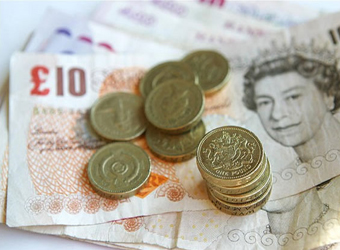The pound sterling dipped 0.1 per cent on Thursday to $1.2995 but remains on track for a fourth consecutive weekly gain against the dollar, as UK data suggests limited scope for the BoE to cut rates in August.
UK data showed average weekly earnings, excluding bonuses, grew by 5.7 per cent in the three months to May, aligning with median forecasts. Sterling reached a session high of $1.30125 before the wage growth figures were released.
Wednesday’s consumer price report indicated service-sector inflation held steady at 5.7 per cent, while headline inflation remained at 2 per cent. Additionally, UK GDP rose by 0.4 per cent in May, surpassing forecasts of 0.2 per cent, following zero growth in April.
Futures markets now see a 40 per cent chance of a quarter-point cut to 5.0 per cent when the BoE meets on August 1, down from 50 per cent earlier this week and 60 per cent at the start of July.
Despite Thursday’s dip, the pound crossed $1.30 on Wednesday for the first time since July last year and has risen 2.1 per cent against the dollar in 2024, making it the best-performing major currency this year.
In comparison, the Swiss franc, last year’s top performer with a 9 per cent gain, has fallen 5 per cent in 2024. The pound’s strength is partly due to a weakening dollar, with investors anticipating a potential US rate drop as early as September.
Over the next six months, traders expect UK rates to fall to around 4.60 per cent, compared to an estimated 4.25–4.75 per cent in the US and above the projected 4.55 per cent in New Zealand, which currently holds the highest rates in the G10.
Against the euro, sterling has risen 3 per cent in 2024, reaching its strongest level in nearly two years. On Thursday, the euro/sterling remained flat at 84.12 pence.
Analysts suggest sterling will stay within a tight trading range.
Attribution: Reuters.


